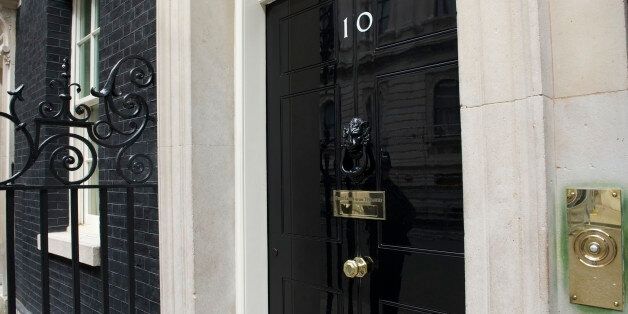
Assuming the polls are right, Theresa May is set for a big win on 8 June. But what will a May victory bring? Here are five predictions.
1. Strong and stable tax rises
May's refusal to rule out tax rises is a tacit admission that the government needs to raise more money. Government debt has grown significantly since Britain 'ran out of money' in 2010. What is more, the Federal Reserve has raised interest rates twice since Christmas. As other banks follow suit, the government will need more money to service its debt.
The government also has some big-ticket items to pay for. Brexit, could cost as much as 70 billion Euros. This pales in comparison to Trident. Prior to the Brexit vote, estimates put the cost of the WMDs at £205 billion. With the pound's devaluation, that has gone up by around 15 percent, to something like £240 billion - more than twice the annual budget of the NHS. Faced with rising debt, and huge spending commitments, tax must rise.
2. Strong and stable austerity
In 2010 David Cameron promised that austerity would be over within five years. In 2015, he made much the same pledge, stating that the cuts would be over by 2020. Philip Hammond has dropped Cameron's timetable, and acknowledged that cuts will be part of life for the foreseeable future.
Education is one area that is likely to be hit hard. The government has frozen education spending until 2020. At the same time, May's grammar school initiative means that existing resources will be spread more thinly. In reality, the 'freeze' will mean budget cuts of around 6.5% for most schools, the first real terms cut in education since John Major left Downing Street twenty years ago.
While austerity will become effectively permanent, the deficit will remain. Hammond aims to return the government to a surplus, but he has refused to set a date. This indicates that Conservative leaders know that current rates of economic growth and current tax receipts are too low to push government finances back into the black any time soon.
3. Strong and stable child poverty
Growing child poverty is another likely outcome of a May victory. Child poverty has more than doubled since 2010. Labour cut child poverty from around 27% in 1997 to about 10% in 2010, aiming to eradicate it completely by 2020. However, Labour's anti-poverty policies were some of the first casualties of austerity. As a result, around 28% of children in Britain now live in poverty. If current trends continue, the number of children living in poverty it is likely to grow from 3.7 million today to more than 5 million by 2022.
4. Strong and stable rising inequality
There is nothing new about rising inequality. Harold Wilson was the last Prime Minister to consistently narrow the gap between rich and poor. Rising inequality, a legacy of the Thatcher Revolution, continued under New Labour. However, Tony Blair and Gordon Brown mitigated its growth by increasing tax on the rich, and through schemes that targeted poverty. Conservative policies have done the opposite. The Cameron-Clegg government cut benefits strategically. But by 2015 everything that could be cut painlessly was already long gone. Cuts in welfare since 2015 have hit the poorest 20% of Britons the hardest, and further cuts are likely to do the same.
In the next five years, equality of opportunity is also likely to diminish. Rising child poverty, falling school budgets, and record numbers of children in private education, will mean that, increasingly, life chances are determined early. Less than half the children living in poverty attain five good GCSEs, the baseline requirement for a reasonable job. In recent years, following Michael Gove's 'strengthening' of the curriculum, the proportion of state school students getting the top grades has declined. Private schools, which have been able to opt-out of Gove's reforms, however, have bucked the national trend, increasing the proportion of students with the highest grades.
May argues that grammar schools will increase equality of opportunity by offering a world class education to gifted students, irrespective of class. The evidence, however, points in a different direction. Statistically, the eleven-plus gives the advantage to middle class students of average ability over bright children from the working class.
5. Strong and stable Brexit
Between now and 2022 something called 'Brexit' will happen. The tone of the Conservative campaign gives an indication of how Party leaders envisage the final deal. May's campaign has not revived the slogan 'Take back control', or promised millions for the NHS. May is being put forward merely as a source of strength and stability in an uncertain time. Evidently, the current campaign is an exercise in expectations management, rather than an appeal to the gung-ho optimism of the Leave campaign.
The timing of the current campaign is also suggestive. The shape of Brexit is likely to emerge in 2019. Going to the country now means that the government will not have to face the electorate in 2020. This may indicate that at least some close to the Prime Minister feel that the eventual Brexit deal, or perhaps the economic fallout of leaving the EU, will turn the electorate against the government, making an election in the immediate aftermath of Brexit unwinnable.
Since the introduction of free market policies in 1979, the growth of the British economy has slowed, inequality of wealth has widened, and long term under-employment has become a perpetual feature of the economy. In the last seven years, as welfare and government services have been rolled back, the consequences of these long-term trends have become clear: growing debt, growing poverty, and reduced equality of opportunity. May is, no doubt, sincere in her desire to end poverty and extend opportunity, but her policies are no antidote to Britain's entrenched problems.
